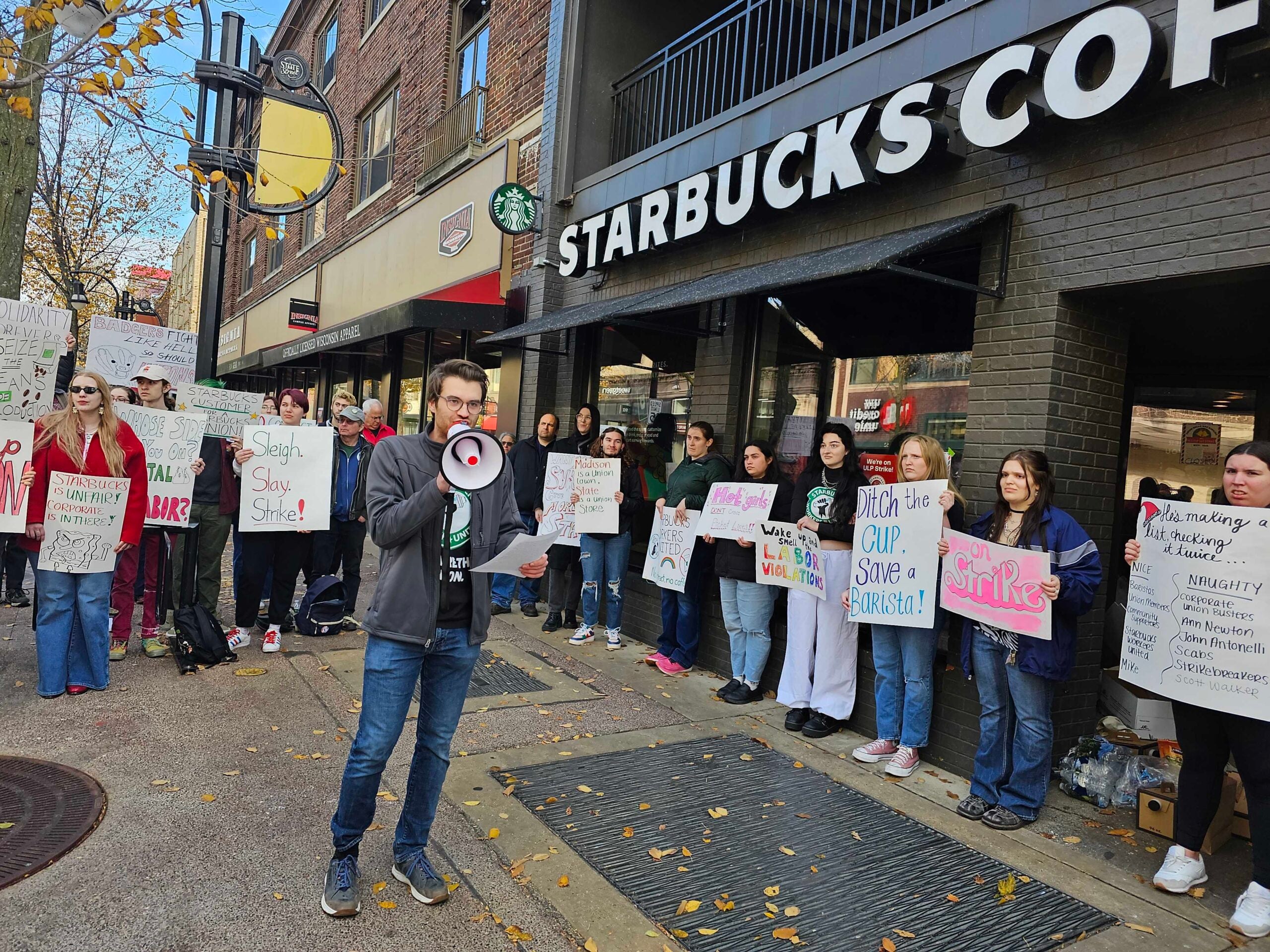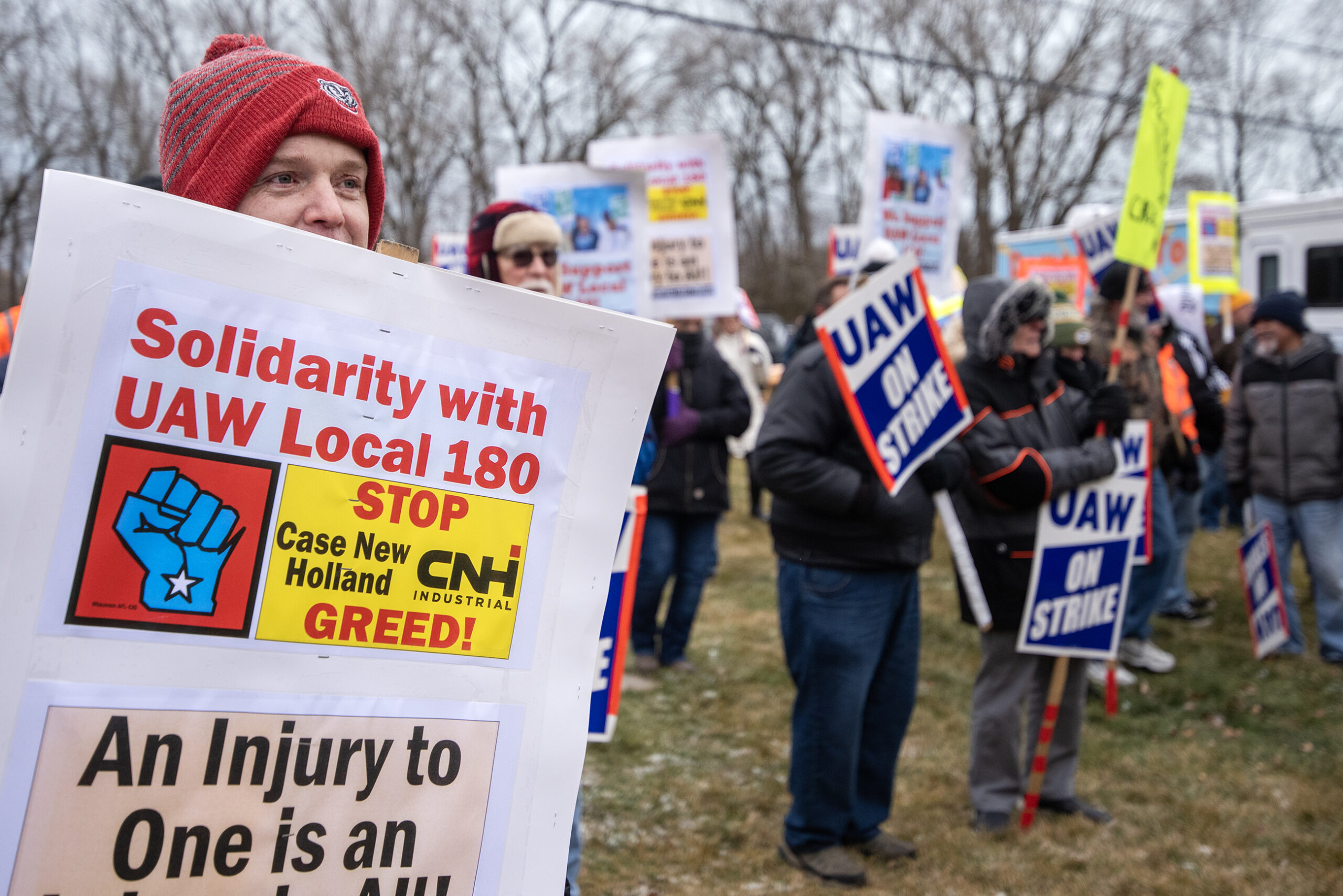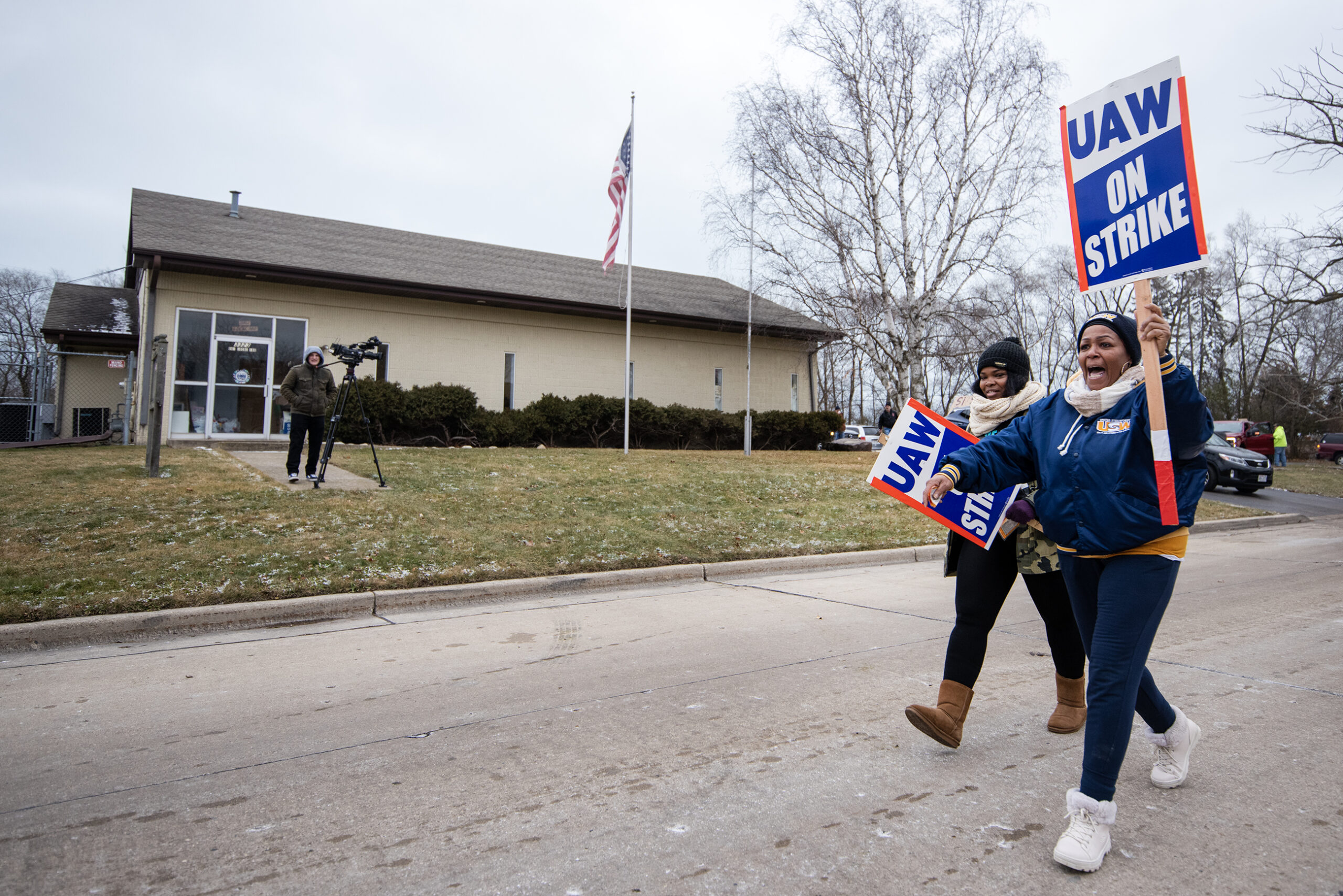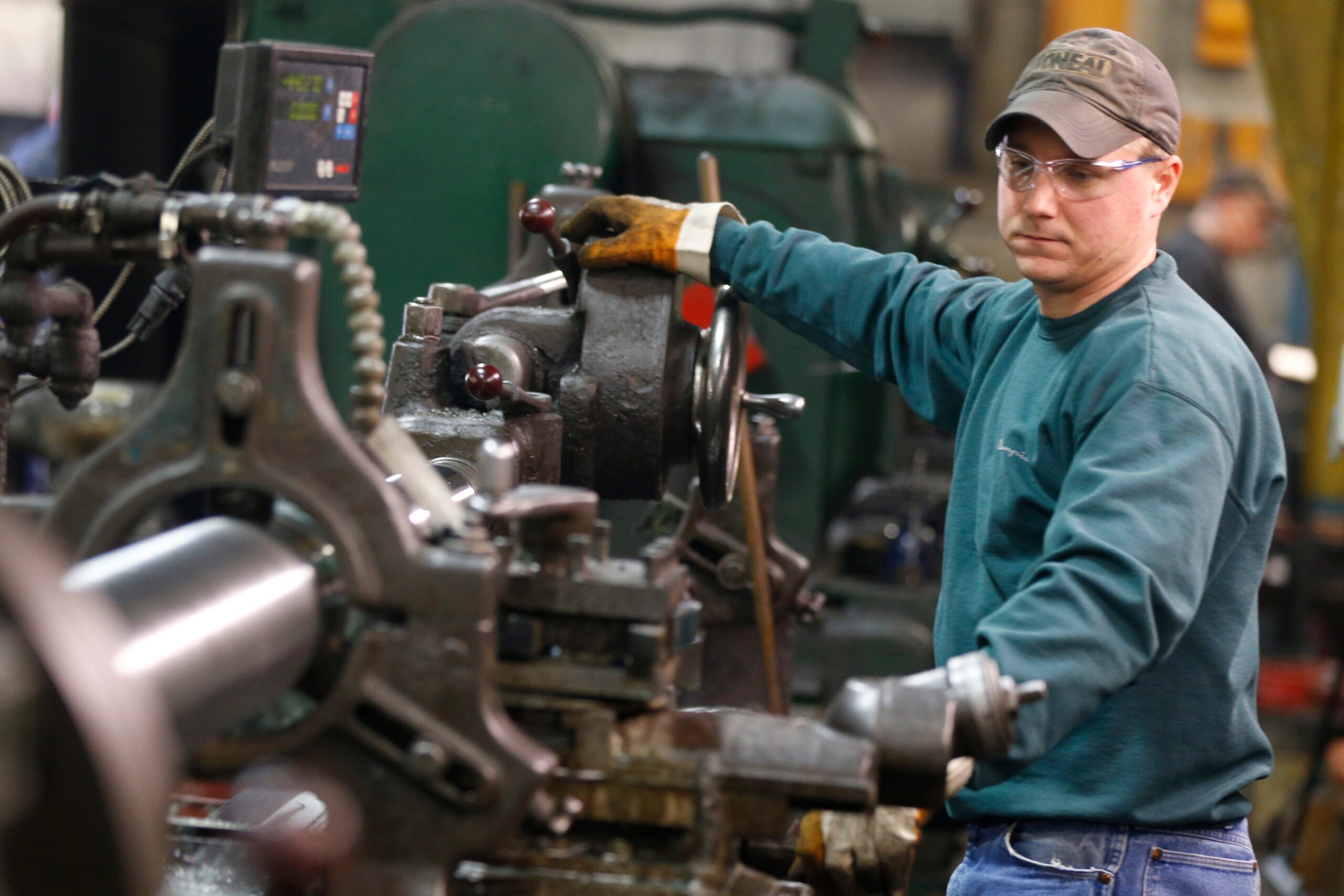Labor unions in Wisconsin saw modest growth last year, according to the U.S. Bureau of Labor Statistics.
There were about 230,000 union members in the state in 2017, according to figures released Friday by the bureau, making the percentage of union members at 8.3 percent, two tenths of a percent higher than 2016.
But the modest increase doesn’t necessarily mean long-term growth for labor unions, said Laura Dresser, an economist with the University of Wisconsin-Madison’s Center on Wisconsin Strategy.
Stay informed on the latest news
Sign up for WPR’s email newsletter.
“I certainly wouldn’t take it as a sign yet that that trend is turning around and that we’re definitely on a growth trajectory with labor,” Dresser said. “It’s just that the very consistent and dramatic declines, at least this year, didn’t happen. It was more of a stagnation.”
The number of Wisconsin workers represented by unions grew from 244,000 in 2016 to 250,000 in 2017, but the percentage remained at 9 percent from 2016 to 2017 because the overall labor force grew at the same time.
The Wisconsin figures largely match national trends.
Union members made up 10.7 percent of the United States workforce in 2017, unchanged from the previous year.
Dresser said shifts in unionization tend to reflect which sectors of the economy are growing and which are declining.
“When the public sector is dynamic, when the manufacturing sector is dynamic, both of that helps the overall unionization rate,” she said. “And as the service sector in the state grows, the unionization rate declines.”
Union membership remains well below the levels seen before Gov. Scott Walker’s signature Act 10 law or passage of the state’s so-called “right-to-work” legislation.
Nonetheless, Wisconsin AFL-CIO President Phil Neuenfeldt said he was “very encouraged” by the new numbers.
He said unions have three main goals this year: economic and job growth, boosting wages and taking a “closer look at child care, transportation (and) health care — those things that are needed to build an infrastructure (so that) workers can afford to work.”
Neuenfeldt also took issue with what he called “attacks” by lawmakers “to take away the ability for people to earn a decent living. Whether it’s the attack on prevailing wage in construction, or a two-tier system in industrial sectors or whether it’s trying to increase the minimum wage for other workers, these are issues that really need to be dealt with because they deal with people’s livelihoods, (for) our members as well as our workers.”
Backers of those laws that curbed collective bargaining in Wisconsin maintain the measures have been good for the state’s economy.
“Since right to work was signed into law in 2015, it has put the power back into the hands of employees,” said Chris Reader, director of Health and Human Resources Policy for Wisconsin Manufacturers and Commerce. “Workers are now given the freedom to choose whether or not they want to belong to a union, and that is exactly what they are doing. Instead of automatically seeing dues deducted from their paycheck with little input, each individual gets to decide if they find value joining a union.”
Wisconsin Public Radio, © Copyright 2024, Board of Regents of the University of Wisconsin System and Wisconsin Educational Communications Board.





